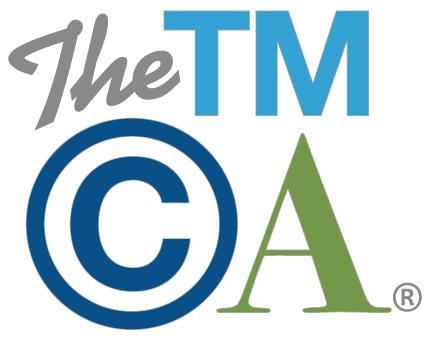#COVFEFE – It’s a Thing, But Not a Trademark
 On May 31, 2017, President Trump tweeted a half-formed message with a mystifying final word: “Despite the constant negative press covfefe”. The Twitterverse and other social media platforms went wild with re-tweets, memes and assorted guesses about what “covfefe” meant or what actual word or message was intended. Jumping on the trending hashtag, an enterprising trademark applicant named John E. Gillard also swooped into action by filing an application later the same day to register #COVFEFE for various items of apparel based on intent to use in commerce. The application was later amended to allege commercial use, with specimens submitted showing use of the mark on clothing items. These efforts to advance the application towards registration came to naught, however, as the Trademark Trial and Appeal Board in In re Gillard affirmed the Examiner’s refusal to register the mark on the ground that #COVFEFE does not function as a trademark for the apparel items identified in the application.
On May 31, 2017, President Trump tweeted a half-formed message with a mystifying final word: “Despite the constant negative press covfefe”. The Twitterverse and other social media platforms went wild with re-tweets, memes and assorted guesses about what “covfefe” meant or what actual word or message was intended. Jumping on the trending hashtag, an enterprising trademark applicant named John E. Gillard also swooped into action by filing an application later the same day to register #COVFEFE for various items of apparel based on intent to use in commerce. The application was later amended to allege commercial use, with specimens submitted showing use of the mark on clothing items. These efforts to advance the application towards registration came to naught, however, as the Trademark Trial and Appeal Board in In re Gillard affirmed the Examiner’s refusal to register the mark on the ground that #COVFEFE does not function as a trademark for the apparel items identified in the application.
Failure to function as a trademark as a ground of registration refusal is different from a concern that a mark might be descriptive or generic. It is a recognition, as the Board observed, that “The Trademark Act is not an act to register mere words, but rather to register trademarks.” The key to determining whether a word or designation functions as a trademark is to evaluate whether the relevant public would perceive the mark as an indicator of the source of the goods, even if the name of the source is unknown.
Since long before COVFEFE became a thing, the USPTO has refused registration under a variety of circumstances where a word or designation fails to function as a mark. In fact, as the Board pointed out in Gillard, Section 1202 of the Trademark Manual of Examining Procedure lists fifteen grounds for refusal of registration under the general failure-to-function rubric. Common examples are marks that are merely informational slogans or “common laudatory phrases” widely used in a particular industry, such as DRIVE SAFELY; NO MORE RINOs! (for No More Republicans in Name Only) and ONCE A MARINE ALWAYS A MARINE. Applications to register #METOO have also been refused on failure to function grounds, and just last week, in a precedential opinion in In re DePorter, the Board affirmed the refusal of registration of #MAGICNUMBER108 for apparel because the evidence showed consumer perception of the designation as informational about the Chicago Cubs, rather than being an indicator of source.
The TTAB in Gillard conducted a thorough review of evidence regarding the history and use of the word “covfefe”, not only in the media but also on merchandise from different sources such as t-shirts, mugs, beach balls, bath soap, door mats and keychains. After looking at all the evidence, the Board conceded that “COVFEFE” was a “sui generis nonsense word that does not fit neatly” into one of the more typical categories of failure-to-function marks. But the record showed that it was “frequently and commonly used as a social, political, or similarly informational message in support or disapproval of President Trump.” So while there is “no true meaning of the word”, it did not follow that #COVFEFE functions as a trademark for the applicant’s goods.
The hashtag in #COVFEFE was found to be “particularly probative” of the public’s understanding of Gillard’s mark. As the Board explained, “The fact that the applied-for mark is a hashtag does not preclude its registration,” but “because hashtags are commonly employed to facilitate categorization and searching of topics of public discussion, and the record makes it clear that #COVFEFE has served that purpose in promoting discussion of the mystery word in the President’s tweet, the public will not understand #COVFEFE to identify one, and only one, source of clothing, and to recognize Applicant as that source, when it appears on Applicant’s goods.” Further, the record showed that the public is accustomed to seeing many items of clothing, from many different sources” bearing the word COVFEFE, such that consumers will not perceive #COVFEFE as a source indicator pointing uniquely to applicant’s goods.
Finally, the Board reviewed pictures of the specimens of use submitted by Gillard showing the #COVFEFE mark displayed on various clothing items. While the mark was in fact used “in ways befitting a trademark”, that conventional manner of use was not dispositive of the issue, and did not override the other evidence of the non-source identifying nature of the word COVFEFE.
So while it was a nice try at fast-filing a trademark application in the hope of commercially exploiting a viral internet phenomenon, the Board’s ruling is entirely consistent with other cases in which a rush to register popular words or slogans has foundered on failure-to-function grounds. As Mr. Gillard might be heard to say, “Oh COVFEFE!”







